When choosing between ceramic and glass tea vessels, evaluate your preferences and needs. Ceramic offers excellent heat retention, durability, and authentic flavor preservation, making it ideal for leisurely sipping. Glass provides a visual experience, showcasing the tea's color and clarity while being non-porous and easy to clean. Your choice will affect heat retention, aesthetics, durability, and flavor influence. Ceramic is best for black, oolong, and herbal teas, while glass suits flowering and light-colored teas. Both materials have unique cultural significance and environmental impacts. By weighing these factors, you'll find the perfect vessel to enhance your tea-drinking experience. Exploring further will reveal even more nuances to assess.
Understanding Tea Vessel Materials
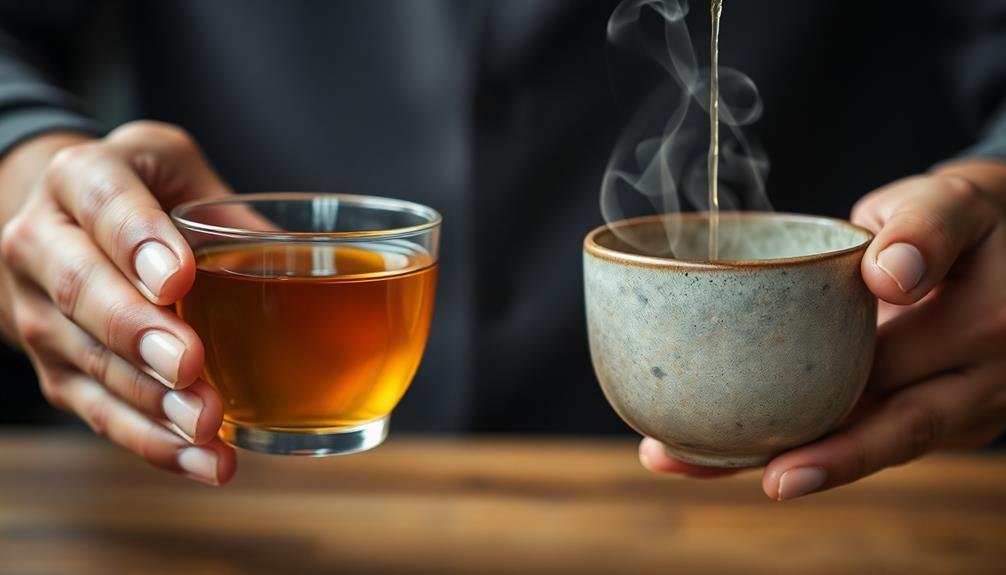
When it comes to choosing your perfect tea vessel, understanding the materials used is key. The two most common options are ceramic and glass, each with distinct properties that affect your tea-drinking experience.
Ceramic vessels, including porcelain and stoneware, are prized for their heat retention capabilities. They'll keep your tea warm for longer periods, making them ideal for leisurely sipping.
Ceramic also doesn't impart any flavors to your tea, preserving its authentic taste. However, these vessels can be heavier and more prone to chipping or breaking.
Glass tea vessels offer a unique visual experience, allowing you to appreciate the color and clarity of your brew. They're non-porous, which means they won't absorb flavors or odors from previous teas.
Glass is also easy to clean and doesn't stain. On the downside, it doesn't retain heat as well as ceramic and can be more fragile.
Both materials come in various shapes and sizes, from traditional teapots to modern infuser mugs. Your choice will depend on personal preference, the types of tea you enjoy, and how you plan to use your vessel.
Heat Retention Properties
As you select your ideal tea vessel, heat retention becomes an essential factor to contemplate. Different materials have varying abilities to maintain temperature, which can greatly impact your tea-drinking experience.
Ceramic vessels, especially those made of thick porcelain or stoneware, excel at heat retention. They'll keep your tea warm for longer periods, allowing you to savor your brew at a consistent temperature. This property makes ceramic ideal for leisurely tea sessions or when you prefer to drink your tea slowly.
Glass, on the other hand, doesn't retain heat as well as ceramic. It cools more quickly, which can be advantageous if you're sensitive to hot beverages or prefer your tea at a lower temperature. The faster cooling also makes glass suitable for teas that are best enjoyed slightly cooled, like certain green or white teas.
If you're torn between the two, consider double-walled glass vessels. These provide better insulation than single-walled glass while still offering the visual appeal of transparent containers.
Ultimately, your choice should align with your personal preferences and tea-drinking habits. Whether you opt for ceramic's warmth-preserving qualities or glass's cooling properties, you'll find a vessel that enhances your tea experience.
Aesthetic Appeal and Presentation
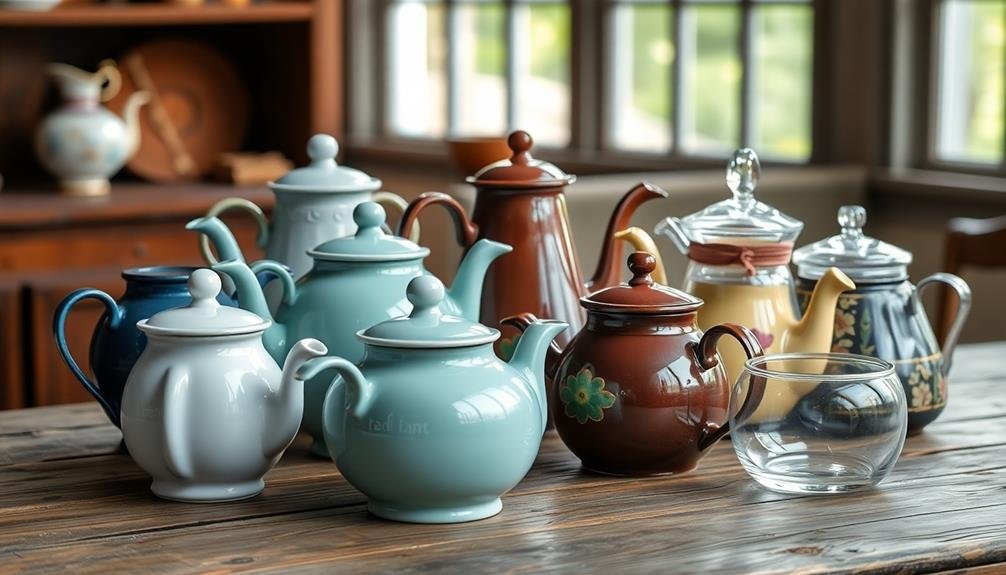
When selecting your ideal tea vessel, don't overlook its visual charm and elegance.
You'll find a wide array of color and pattern options to suit your personal style and complement your existing decor.
Consider how your chosen teaware will coordinate with other tableware pieces to create a cohesive and appealing presentation for your tea-drinking experience.
Visual Charm and Elegance
Selecting a tea vessel isn't just about functionality; it's also about visual appeal. Both ceramic and glass teapots offer unique aesthetic qualities that can enhance your tea-drinking experience.
Ceramic teapots often exude a classic, timeless charm. They come in various shapes, sizes, and colors, allowing you to choose one that complements your personal style or home decor. Hand-painted designs, intricate patterns, and glazes can add artistic flair to your tea service.
Ceramic vessels also have a warm, organic feel that many find comforting and inviting.
Glass teapots, on the other hand, offer a modern, sleek elegance. Their transparency allows you to appreciate the color and clarity of your tea as it steeps, turning the brewing process into a visual spectacle. This can be particularly appealing for flowering teas or colorful herbal blends.
Glass vessels also reflect light beautifully, creating a bright, airy atmosphere.
Consider how your chosen vessel will look on your table or shelf. Will it be a statement piece or blend seamlessly with your existing decor?
Color and Pattern Options
From bold solids to intricate designs, tea vessels offer a wide array of color and pattern options to suit every taste. When selecting your perfect tea vessel, consider how its aesthetics will complement your tea-drinking experience and overall decor.
Ceramic vessels often feature hand-painted designs, ranging from delicate florals to geometric patterns. You'll find traditional blue and white porcelain, colorful majolica, and rustic earthenware with unique glazes. These options allow you to express your personal style while enjoying your favorite brew.
Glass tea vessels, on the other hand, showcase the tea itself. Clear glass lets you appreciate the color and clarity of your tea, making it ideal for blooming teas or vibrant herbal infusions. Some glass vessels incorporate subtle tints or etched patterns for added visual interest without overshadowing the tea.
Whether you prefer a minimalist look or something more ornate, there's a tea vessel to match your aesthetic. Consider choosing vessels in colors that complement your existing dinnerware or opt for a statement piece that stands out.
Tableware Coordination Possibilities
Coordinating your tea vessel with other tableware elements can elevate your tea-drinking experience from simple refreshment to a visually stunning ritual. Reflect on how your chosen tea vessel complements your existing tableware or creates an opportunity for a new aesthetic theme.
For a cohesive look, match your tea vessel with your serving tray, sugar bowl, and creamer. You can opt for a uniform set or mix and match complementary pieces. Don't forget to reflect on your table linens, placemats, and napkins when creating your tea presentation.
Here's a quick guide to help you coordinate your tea vessel with different tableware styles:
| Tea Vessel Style | Complementary Tableware | Suggested Accessories |
|---|---|---|
| Minimalist | Clean lines, solid colors | Sleek sugar cubes, modern spoons |
| Vintage | Floral patterns, lace doilies | Antique silver tongs, porcelain creamer |
| Rustic | Wooden trays, earthenware plates | Honey dipper, woven coasters |
| Asian-inspired | Bamboo mats, low profile cups | Cast iron teapot, wooden tea scoop |
| Eclectic | Mix of patterns and textures | Mismatched saucers, colorful stirrers |
Durability and Longevity
A tea vessel's durability and longevity are essential factors to take into account when making your choice. Both ceramic and glass options have their strengths in this area, but they differ in how they withstand daily use and potential accidents.
Ceramic vessels, particularly those made from high-quality porcelain or stoneware, are known for their durability. They can withstand high temperatures and are less likely to break if accidentally dropped. However, they may chip or crack if subjected to sudden temperature changes or impacts.
Glass tea vessels, while more fragile, offer their own advantages. They're resistant to staining and odor absorption, maintaining their clarity over time. Many glass options are made from tempered or borosilicate glass, increasing their resistance to thermal shock and breakage.
When considering longevity, think about how you'll use your tea vessel. If you're prone to accidents or have a busy household, a sturdy ceramic option might be best.
For those who prioritize aesthetics and don't mind being extra careful, a glass vessel could be a great long-term choice. Remember, proper care and handling will greatly extend the life of either material.
Flavor Influence on Tea

While you mightn't realize it, the material of your tea vessel can greatly influence the flavor of your brew. Ceramic and glass, the two most popular options, interact differently with your tea. Ceramic tends to retain heat better, which can lead to a more robust flavor profile. It's also porous, potentially absorbing some of the tea's essence over time.
Glass, on the other hand, is non-porous and doesn't affect the taste directly, allowing you to enjoy the tea's pure flavor.
When choosing between ceramic and glass based on flavor influence, consider these factors:
- Heat retention: Ceramic keeps your tea warmer for longer, which can intensify flavors.
- Porosity: Ceramic may absorb subtle flavors over time, while glass remains neutral.
- Visual appeal: Glass allows you to appreciate the tea's color and clarity.
- Temperature sensitivity: Some teas, like green tea, benefit from lower temperatures that glass naturally provides.
Ultimately, your choice depends on personal preference and the types of tea you enjoy most. If you're a purist who wants to taste every nuance, glass might be your best bet. For those who prefer a more complex flavor experience, ceramic could be the way to go.
Cleaning and Maintenance
To keep your tea vessel in top condition, you'll need to master proper cleaning techniques.
Regular maintenance prevents stubborn stains and unwanted odors from developing over time.
Proper Cleaning Techniques
Cleanliness is paramount when it comes to maintaining your tea vessel. Whether you've chosen ceramic or glass, proper cleaning techniques will guarantee your teaware remains in top condition and your brews taste their best. After each use, rinse your vessel with warm water to remove any tea residue.
For a deeper clean, follow these steps:
- Fill the vessel with warm water and add a small amount of mild, unscented dish soap.
- Gently scrub the interior and exterior with a soft sponge or cloth, paying extra attention to any stains or buildup.
- Rinse thoroughly with clean water until all soap residue is gone.
- Dry the vessel completely with a lint-free cloth or air dry it upside down on a rack.
For stubborn stains, create a paste using baking soda and water. Apply it to the affected areas, let it sit for a few minutes, then scrub gently and rinse well.
Avoid using abrasive materials or harsh chemicals, as these can damage the surface of your tea vessel. If you're cleaning a ceramic piece with a glaze, be extra careful not to scratch or chip it.
Regular cleaning will keep your tea vessel looking great and performing well for years to come.
Preventing Stains and Odors
Tea stains and lingering odors can quickly turn your beloved tea vessel into an eyesore. To prevent this, it's essential to adopt good habits and maintenance practices. After each use, rinse your teacup or teapot immediately with warm water. For stubborn stains, use a mixture of baking soda and water to create a gentle scrub. Don't let tea sit in your vessel for extended periods, as this can lead to discoloration and unpleasant smells.
Here's a quick guide to preventing common issues:
| Problem | Cause | Prevention |
|---|---|---|
| Stains | Tannins in tea | Rinse promptly |
| Odors | Residue buildup | Clean thoroughly |
| Discoloration | Prolonged exposure | Use promptly |
To keep your tea vessel in top condition, avoid using harsh chemicals or abrasive materials. Instead, opt for natural cleaning solutions like lemon juice or white vinegar. For glass vessels, you can use denture tablets to remove stubborn stains. Remember to dry your tea vessel completely after cleaning to prevent water spots and mold growth. By following these simple steps, you'll guarantee your tea vessel remains pristine and ready for your next brew.
Versatility in Tea Types
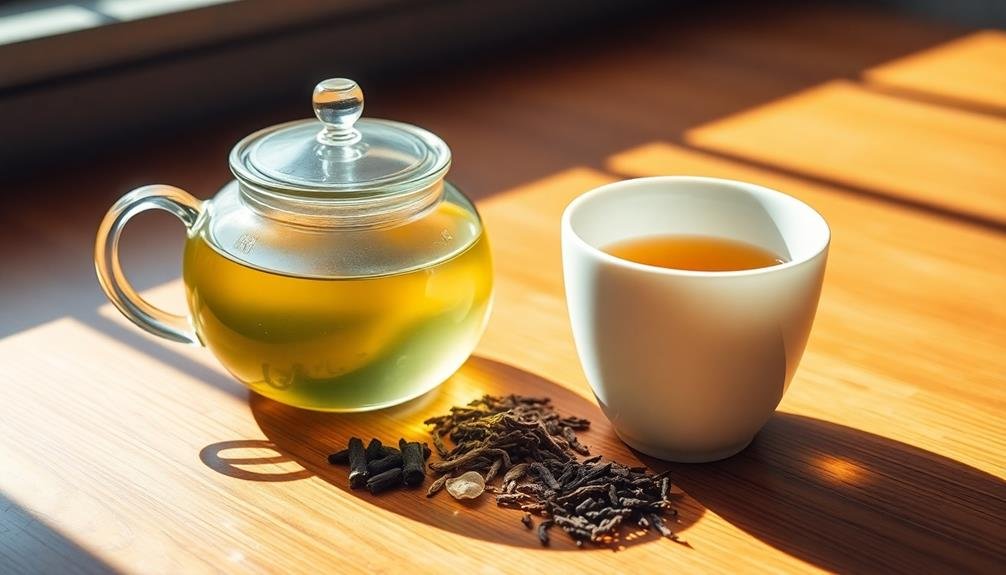
When selecting a tea vessel, considering its versatility for different tea types is essential. Both ceramic and glass options offer unique advantages for various teas.
Ceramic vessels, with their heat retention properties, are excellent for black, oolong, and herbal teas that benefit from maintaining a consistent temperature. They're also great for traditional Chinese and Japanese tea ceremonies.
Glass teaware, on the other hand, allows you to appreciate the visual aspects of your tea, making it ideal for flowering teas and light-colored green or white teas.
To guarantee your tea vessel accommodates different tea types, consider these factors:
- Temperature control: Choose a material that can handle both hot and cold brews.
- Flavor neutrality: Opt for non-porous materials that won't absorb flavors from previous brews.
- Brewing method compatibility: Confirm your vessel works with different infusers or brewing techniques.
- Size versatility: Select a size that's suitable for both single servings and larger gatherings.
Ultimately, the most versatile tea vessel will depend on your personal preferences and the types of tea you enjoy most frequently.
Cultural Significance and Traditions
Steeped in history and tradition, tea vessels carry immense cultural significance across various societies. As you choose your perfect tea vessel, consider the rich cultural heritage associated with different materials and designs.
In China, you'll find that porcelain teapots are highly revered, symbolizing purity and elegance. The Japanese tea ceremony elevates the humble clay teapot to an art form, with each vessel carefully crafted to enhance the tea-drinking experience. In contrast, Russia's ornate samovars serve as the centerpiece of social gatherings, while British afternoon tea wouldn't be complete without a fine bone china teapot.
| Culture | Traditional Vessel | Significance |
|---|---|---|
| Chinese | Yixing Clay Teapot | Enhances tea flavor |
| Japanese | Kyusu | Precise pouring |
| Moroccan | Ornate Metal Pot | Hospitality symbol |
When selecting your tea vessel, you're not just choosing a container; you're embracing a piece of cultural heritage. Whether you opt for a delicate porcelain cup or a sturdy cast iron teapot, your choice reflects both personal taste and respect for time-honored traditions. By understanding these cultural nuances, you'll deepen your appreciation for the art of tea preparation and enjoyment.
Environmental Impact Considerations
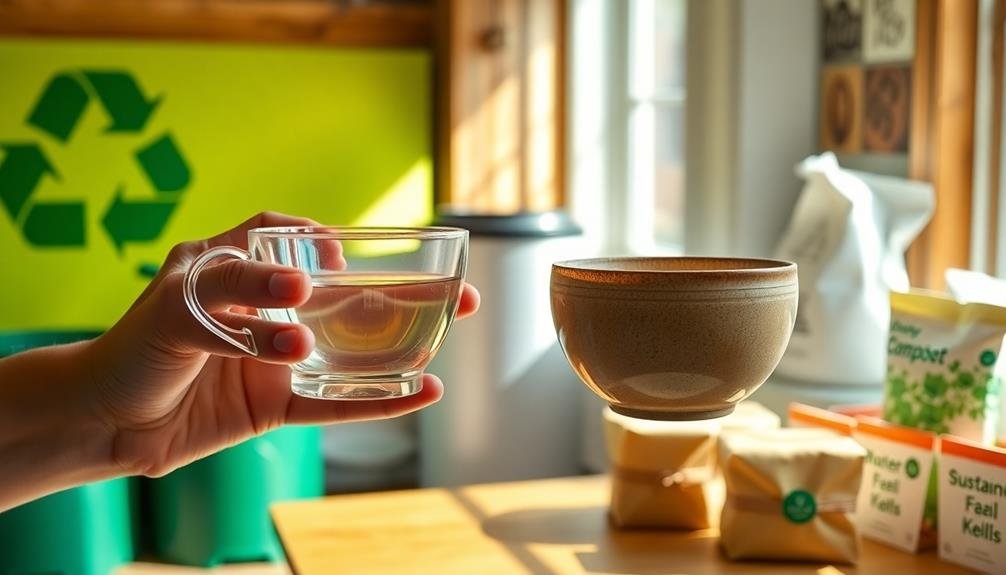
As you select your ideal tea vessel, it's important to contemplate the environmental impact of your choice. Both ceramic and glass options have their pros and cons when it comes to sustainability.
Ceramic vessels are often more durable, potentially lasting for generations if properly cared for. However, their production can be energy-intensive and may involve harmful chemicals in glazes.
Glass teaware, on the other hand, is recyclable but more fragile, potentially leading to more frequent replacements.
When considering the environmental impact of your tea vessel, keep these factors in mind:
- Longevity: Choose a vessel that'll withstand daily use and proper care
- Materials: Opt for lead-free ceramics or borosilicate glass for safer, more eco-friendly options
- Production methods: Research brands that prioritize sustainable manufacturing practices
- End-of-life disposal: Consider how you'll responsibly dispose of the vessel when it's no longer usable
Cost Comparison
Three main factors influence the cost of tea vessels: material, craftsmanship, and brand.
Ceramic vessels generally range from affordable to high-end, depending on the quality of clay and glaze used. Hand-crafted ceramic pieces often command higher prices due to their uniqueness and artisanal value.
Glass tea vessels, on the other hand, tend to be more consistently priced, with variations based on thickness and heat resistance.
When comparing costs, you'll find that basic ceramic mugs and glass cups are similarly priced. However, specialized tea vessels like ceramic teapots or glass infusers can vary greatly. High-quality ceramic teapots may cost more initially but can last for decades with proper care. Glass teapots are often less expensive but may need replacement sooner.
Brand reputation also plays a role in pricing. Well-known brands or artisan potters may charge premium prices for their products.
You'll need to weigh the cost against factors like durability, aesthetics, and functionality. Remember, a higher price doesn't always guarantee better quality, so research and read reviews before making your choice.
Portability and Travel-Friendliness

Portability is a key factor to contemplate when choosing a tea vessel for travel or on-the-go use.
When it comes to ceramic and glass options, each has its own advantages and drawbacks. Ceramic vessels tend to be more durable and less prone to breakage, making them a safer choice for travel. However, they're often heavier than their glass counterparts, which can be a concern if you're trying to minimize weight in your luggage or bag.
Glass tea vessels, on the other hand, are typically lighter and easier to carry. They're also more versatile, as you can easily see the color and strength of your tea. However, they're more fragile and require extra care when packing or handling.
Consider these factors when choosing a travel-friendly tea vessel:
- Weight: How much additional weight can you comfortably carry?
- Durability: Are you prone to dropping things or need extra protection?
- Size: Do you prefer a compact option or a larger vessel for sharing?
- Functionality: Will you need additional features like a built-in infuser or leak-proof lid?
Ultimately, your choice will depend on your specific travel needs and preferences.
Health and Safety Aspects
When selecting a tea vessel, it's important to contemplate not only its practicality but also its impact on your health and safety. Both ceramic and glass options have their advantages and potential risks.
Ceramic vessels often provide better heat retention, keeping your tea warm for longer. However, some low-quality ceramics may contain lead or other harmful substances that can leach into your beverage. Always opt for high-quality, food-grade ceramics from reputable manufacturers.
Glass tea vessels offer transparency, allowing you to appreciate your tea's color and clarity. They're typically inert and don't affect the taste of your tea. However, glass can be more fragile and prone to breakage, potentially causing injury if mishandled.
Here's a comparison of health and safety aspects for ceramic and glass tea vessels:
| Aspect | Ceramic | Glass |
|---|---|---|
| Heat Retention | Excellent | Good |
| Durability | High | Moderate |
| Chemical Leaching | Possible (low-quality) | Unlikely |
| Breakage Risk | Low | High |
Consider these factors when choosing your tea vessel to guarantee a safe and enjoyable tea-drinking experience. Remember to handle your chosen vessel with care and replace it if you notice any cracks or chips.
Brewing Techniques for Each Material
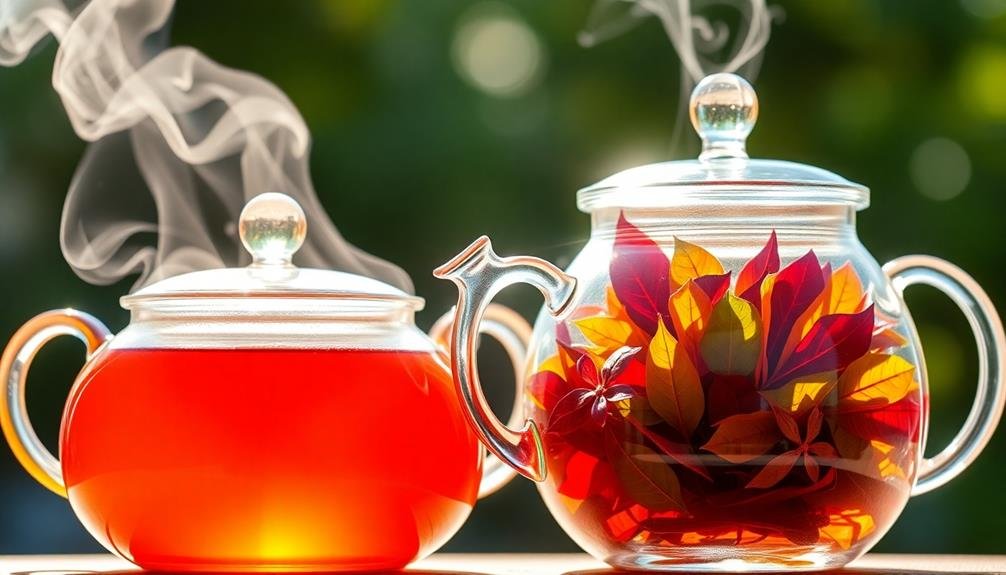
When selecting your ideal tea vessel, you'll want to contemplate how different materials affect your brewing process.
Each material, whether ceramic, glass, or metal, offers unique heat retention properties and infusion control capabilities that can greatly impact your tea's flavor.
Heat Retention Differences
Over time, you'll notice that different tea vessels retain heat differently, affecting your brewing technique.
Ceramic and glass have distinct heat retention properties that can impact your tea's flavor and temperature.
Ceramic vessels, especially thick-walled ones, retain heat well. They'll keep your tea warm for longer periods, making them ideal for leisurely sipping.
However, this heat retention can also lead to over-steeping if you're not careful.
Glass, on the other hand, doesn't retain heat as effectively. It cools faster, which can be beneficial for delicate teas that require precise brewing times.
To understand how these differences affect your tea experience, consider the following:
- Preheating: Ceramic needs more preheating than glass due to its higher heat capacity.
- Steeping time: You'll need to adjust steeping times based on the vessel's heat retention.
- Serving temperature: Glass allows you to serve tea at lower temperatures more quickly.
- Re-steeping: Ceramic's heat retention can make multiple infusions easier without reheating.
Infusion Control Capabilities
Every tea vessel offers unique infusion control capabilities, influencing your brewing techniques.
Ceramic teapots provide excellent infusion control due to their porous nature. They absorb some of the tea's flavors, creating a seasoned vessel that enhances future brews. This feature allows you to dedicate specific pots to certain tea types, preserving their distinct characteristics.
Glass teapots, on the other hand, offer visual control over the infusion process. You'll be able to watch your tea leaves unfurl and monitor the color development, making it easier to achieve your desired strength. This transparency is particularly useful for brewing delicate green and white teas, where timing is vital.
When using a ceramic pot, you'll need to rely more on timing and experience to gauge the infusion progress. With glass, you can make real-time adjustments based on visual cues.
For precise control, consider using a glass teapot with a removable infuser basket. This allows you to separate the leaves from the water at the exact moment you desire, preventing over-steeping.
Ultimately, your choice between ceramic and glass will depend on whether you prioritize flavor enhancement or visual brewing control.
Flavor Impact Considerations
The material of your tea vessel greatly influences the flavor of your brew, making it a key factor in your selection process.
Ceramic and glass both offer unique properties that affect your tea's taste and aroma. Ceramic vessels, especially unglazed ones, can absorb flavors over time, potentially enhancing or altering your tea's profile. They also retain heat better, which can lead to a more consistent brewing temperature.
Glass, on the other hand, is non-porous and doesn't absorb flavors, ensuring a clean taste with each brew.
When considering flavor impact, keep these points in mind:
- Ceramic vessels may impart a subtle earthy taste to your tea
- Unglazed ceramic can develop a seasoned flavor over time
- Glass provides a neutral backdrop, allowing you to taste your tea's true flavor
- The heat retention of ceramic can result in a stronger brew
If you're a purist who enjoys experiencing the unadulterated taste of different teas, glass might be your best choice.
However, if you prefer a more complex flavor profile or frequently brew the same type of tea, a ceramic vessel could enhance your tea-drinking experience.
Consider your personal preferences and brewing habits when making your decision.
Frequently Asked Questions
Can I Use a Ceramic or Glass Tea Vessel for Cold Brewing?
You can absolutely use ceramic or glass vessels for cold brewing tea. They're both excellent choices. You'll find they maintain the tea's flavor well and don't impart any unwanted tastes. Just guarantee your vessel's large enough for your desired batch.
Are There Any Tea Types That Should Never Be Brewed in Glass?
You shouldn't worry about tea types that can't be brewed in glass. All teas can be safely steeped in glass vessels. However, you'll want to be careful with delicate green teas, as they're sensitive to temperature changes.
How Do Ceramic and Glass Tea Vessels Affect the Serving Temperature?
You'll find ceramic retains heat longer, keeping your tea warmer. Glass cools faster but lets you enjoy the tea's color. Both materials affect serving temperature, so choose based on how quickly you'll drink your brew.
Can I Use My Tea Vessel for Other Beverages Besides Tea?
You can definitely use your tea vessel for other beverages. It's versatile! Try it for coffee, hot chocolate, or even cold drinks. Just be mindful of potential staining or flavor absorption, especially with stronger beverages.
Do Ceramic or Glass Tea Vessels Require Special Storage Conditions?
You don't need special storage for ceramic or glass tea vessels. Keep them clean and dry. Avoid extreme temperatures and direct sunlight. Store them safely to prevent chips or cracks. You'll extend their lifespan with proper care.
In Summary
You've explored the key factors in choosing between ceramic and glass tea vessels. Consider your priorities: heat retention, aesthetics, durability, flavor impact, cost, portability, safety, and brewing methods. There's no one-size-fits-all answer, but you're now equipped to make an informed decision. Whether you opt for the classic charm of ceramic or the modern transparency of glass, you'll enjoy your tea in a vessel that suits your unique preferences and lifestyle.


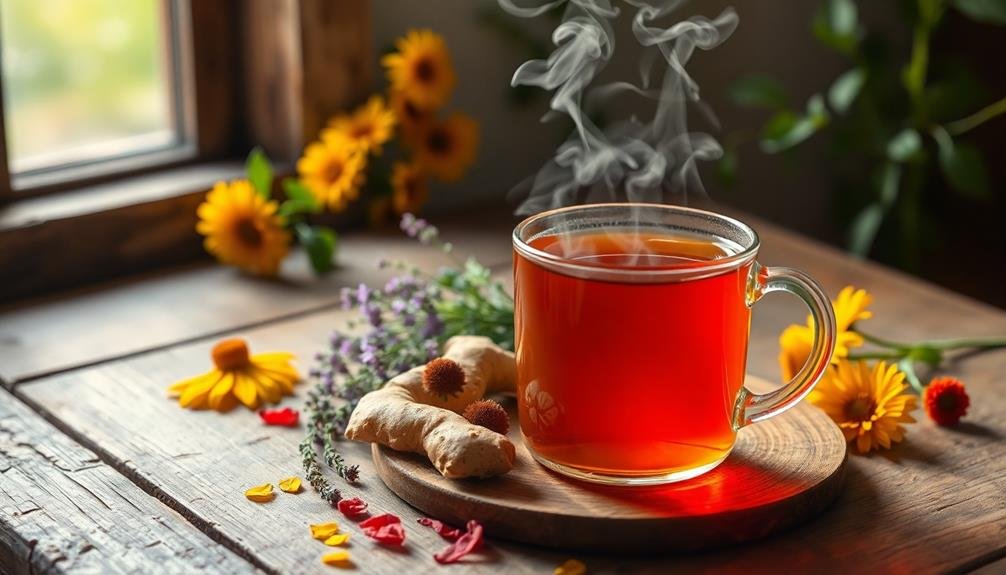
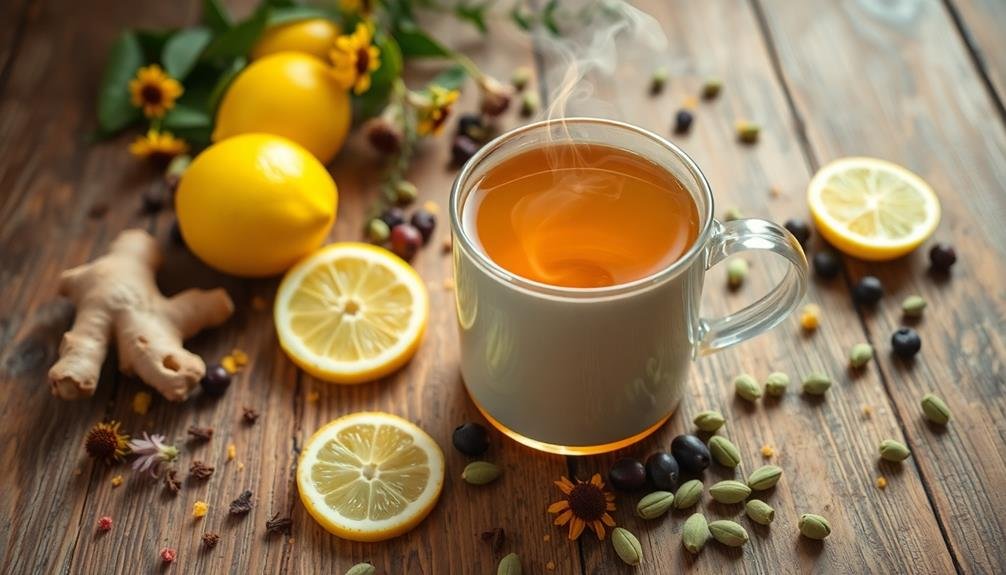
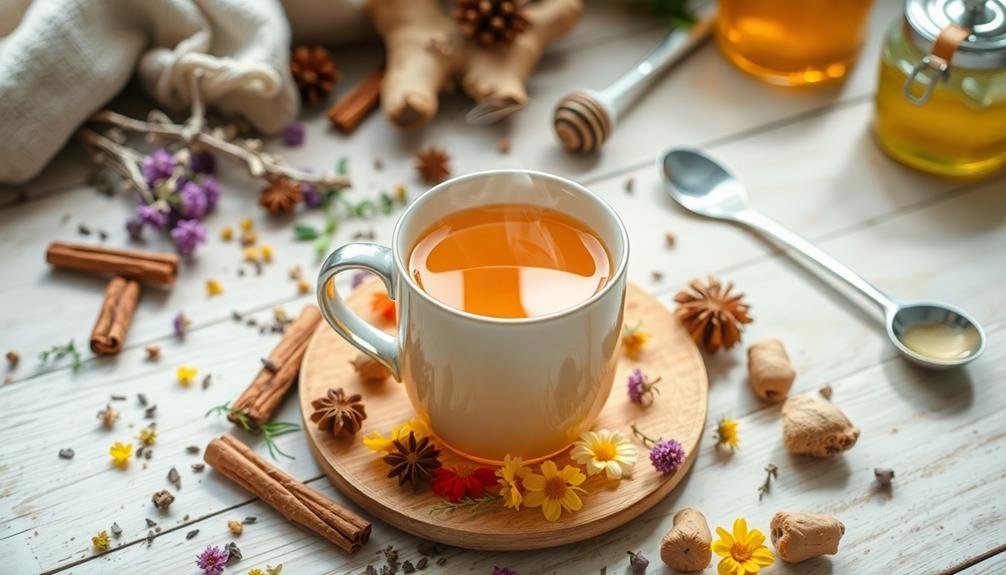
Leave a Reply